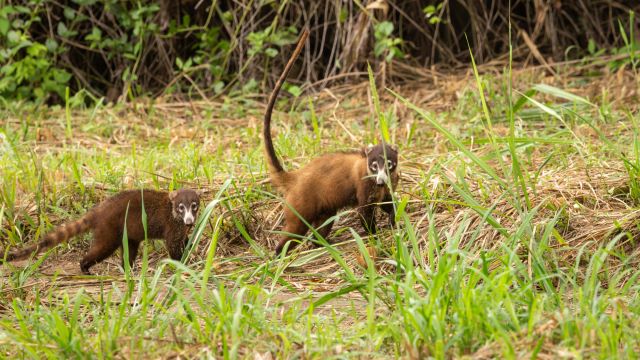At the edge of West Africa, Guinea-Bissau’s landscapes open into a mosaic of mangroves, islands, and forests that quietly shelter some of the continent’s rarest wildlife. Though often overshadowed by its neighbors, the small nation has drawn growing attention from conservationists and adventurous travelers alike, drawn less by spectacle than by the intimate encounters it offers with nature.
The Bijagós Archipelago, designated a UNESCO Biosphere Reserve, is the country’s most celebrated ecological jewel. Spanning more than 80 islands, the reserve serves as a sanctuary for migratory birds, nesting sea turtles, and marine mammals. Loggerhead turtles climb ashore on secluded beaches to lay their eggs beneath moonlight, while sacred ibises and black-crowned cranes rise from the wetlands in sudden bursts of flight. Dolphins trace the channels between islands, their movements mingling with the rhythms of local fishing boats. For birdwatchers, the archipelago remains one of West Africa’s richest sites.
On the mainland, Cacheu River National Park offers another layer of biodiversity. Its terrain shifts from dense mangrove swamps to savanna clearings, creating varied habitats that sustain manatees, monkeys, and more than 300 recorded bird species. Guides from nearby communities often lead tours through the park, pointing out details easily overlooked—an osprey circling high above, or the subtle movement of a manatee surfacing in the river. Their knowledge, rooted in generations of coexistence with the environment, adds dimension to the experience.
Wildlife tours here are not limited to the natural world. Local culture, closely intertwined with the land, plays a central role in shaping the visitor experience. Fishing communities on the Bijagós islands still practice traditional rituals tied to the sea, while conservation initiatives supported by villages emphasize sustainable harvesting and protection of endangered species. Travelers who participate in community-led ecotourism programs contribute directly to these efforts, ensuring that economic benefits flow back to the people who safeguard the ecosystems.
Timing matters in this fragile environment. The dry season, stretching from November to May, generally offers the best access to national parks and reserves, as well as higher chances of spotting wildlife. Even so, conditions can be unpredictable; long boat journeys or sudden storms often test patience. Those who persist, however, are rewarded with a closeness to nature rarely found elsewhere.
Guinea-Bissau’s appeal lies in this balance: a nation where pristine ecosystems exist alongside resilient communities, each reinforcing the other. For those seeking wildlife encounters, the country provides something more enduring than a fleeting adventure—an immersion into the rhythms of land and sea that continue to shape daily life.
Sources
- UNESCO. “Bolama-Bijagós Archipelago Biosphere Reserve.” UNESCO, 2023.
- United Nations Development Programme (UNDP). Guinea-Bissau: Biodiversity and Protected Areas Report. UNDP, 2022.
- Instituto da Biodiversidade e das Áreas Protegidas (IBAP). “Conservation and Ecotourism in Guinea-Bissau.” IBAP, 2021.
- BirdLife International. “Important Bird Areas: Guinea-Bissau.” BirdLife Data Zone, 2023.


